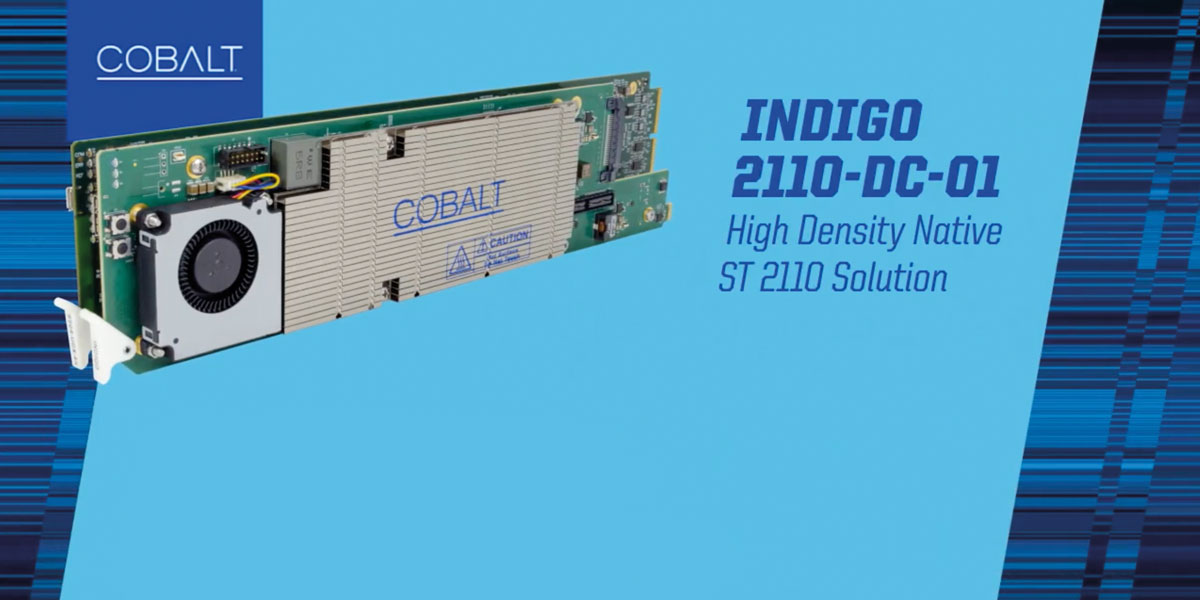A lesson in compression

Posted on Sep 5, 2023 by FEED Staff
An efficient and low-latency remote production is a basic broadcast requisite. Slick video compression is the answer
Sponsored editorial
You have probably heard the old saying ‘there is no free lunch’ – we are going to apply this to video compression. You would like to have high quality, low latency and low bit rate. Unfortunately, you need to pick two and compromise on the third. If you are doing remote production, you want high quality and low latency, which will cost you in bit rate. This is true regardless of technology; what changes is how much bit rate it will cost.
Beginning with baseband
Baseband digital video can be transported directly over IP using SMPTE ST 2110. Quality is pristine, latency is usually negligible, but you are looking at 1.5Gbps for HD, 3Gbps for 1080p50/59.54/60 and 12Gbps for 4K. If you have access to that kind of bit rate and are prepared to pay for it, that is your solution.
If you need to go down in bit rate, look at JPEG XS and similar technologies which can be carried over IP, using VSF TR-07 or TR-08. And it gives you a compression rate selectable between 2:1 and 10:1, so 1080p signal can go as low as 300Mbps. The latency is only a few lines regardless of compression ratio, so the trade-off is simpler – quality versus bit rate. If you can afford the higher bit rates, it is visually lossless.
Handling bigger bit rates
Going down even further in bit rate requires more advanced compression. We are now talking about AVC (H.264) or HEVC (H.265). Options such as JPEG XS and similar technologies process each frame in isolation, only looking at a few lines at a time. They cannot benefit from the correlation that exists between larger areas of a frame, or between frames.
However, making use of such correlations increases the latency. So, we are back to our latency/bit rate/quality trade-off. We can get good quality at a low bit rate, but the latency may be unacceptable. For example, you can get good-looking 1080p60 content at 3Mbps (a 1000:1 compression) using HEVC, but the latency will be several seconds – which is clearly wholly unsuitable
for remote production.
The good news is that these compression standards (especially HEVC) can be fine-tuned for extremely low latency, still providing a reasonable bit rate. That 1080p60 signal can be compressed to something between 30 and 60Mbps, with excellent quality and an end-to-end latency of less than a frame because it uses past frames to help compress the current frame. Keep in mind, not all HEVC encoders and decoders are capable of operation at such latency ranges. Don’t forget audio – you won’t be able to use a traditional audio codec, which will add at least 20 milliseconds of latency, if not more. Audio needs to stay in baseband: use SMPTE ST 302M for putting it in a transport stream with the video.
Regardless of where you are in your bit rate requirements, Cobalt Digital has the right product. If you want to go baseband with ST 2110, look at the Indigo line. If you need JPEG XS, there is the Sapphire line. Finally, if you want to go all the way into compressed streams, Cobalt can offer the Pacific 9992 encoder/decoder line, with ultra-low latency options.
Originally featured in the Autumn 2023 issue of FEED.











